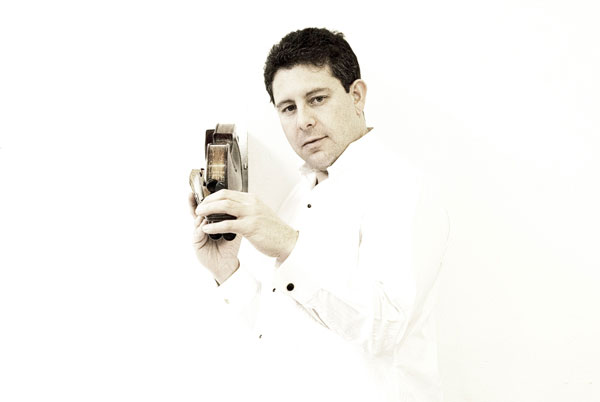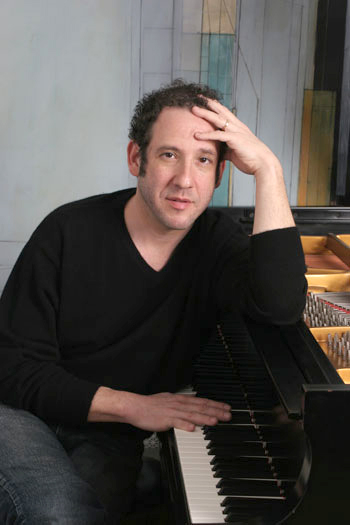|
From:TheBahamasWeekly.com Arts & Culture
Nassau, Bahamas - Under the patronage of Governor-General Sir Arthur Foulkes, the Nassau Music Society’s Saturday night concert at COB featured the internationally-acclaimed Israeli violist Gilad Karni and his esteemed accompanist, American pianist Donald Berman. The youngest member of the New York Philharmonic when he joined in 1992, Mr. Karni was the First Prize Winner of the Lionel Tertis International Viola Competition in 1994 and the recipient of numerous other prizes including awards from the ARD Munich International Competition and the Bryan International String Competition. An alumnus of the Manhattan School of Music, Mr. Karni has toured widely in Europe, Scandinavia, and the United States. He is currently Principal Violist of the Tonhalle Orchestra Zurich, a post to which he succeeded after having been Principal Violist at the Deutsche Oper Berlin. Mr. Karni’s entourage included his beautiful young daughter, Yasmin, who listened attentively throughout the concert. Mr. Berman has an impressive background as well. A prize winner in the Schubert International Competition of 1991, Mr. Berman was a student of John Kirkpatrick, who was a Professor Emeritus at Yale and Curator of the Charles Ives Archive. I think it is fair to say that Mr. Berman was greatly influenced by Professor Kirkpatrick, since Mr. Berman is one of the foremost interpreters of the works of modern American composers such as Ives and Ruggles and has an extensive discography to back it up on Bridge Records, CRI, and New World. (Full disclosure: I also studied piano with Professor Kirkpatrick at Yale.) Mr. Berman also directs the Contemporary Music Ensemble at Tufts University as well as the Summer Piano Institute at the New England Conservatory, and in 2011 he was a Radcliffe Institute Fellow at Harvard University.
Mr. Karni’s and Mr. Berman’s program featured 18th and 19th century works by Italian, Austrian, Russian, and German composers. They opened the program with La Folia in G minor, a theme with variations composed for violin and piano in 1700 by Arcangelo Corelli (1653 – 1713) based on a 16th century or earlier dance performed by shepherds or peasants. Antonio Vivaldi used this same theme in 1705 in his Opus 1 No. 12, a work that was performed in a version transcribed for the Bahamas National Symphony Orchestra a few years ago. These variations made it possible for Messrs. Karni and Berman to display a wide range of techniques, and dramatic as well as dynamic colorations as they shared the melodic lines. Some variations were quite fast, others quite slow; some skipped, some marched. Some lines were austere in their simplicity, such as those for solo, unaccompanied viola. Others required great delicacy and depth of feeling. Still others spanned great leaping intervals and had ferocity in their execution. It was unfortunate that towards the end, the piano got a bit ahead of the viola, but all’s well that ends well. We next heard the Fantasie for Viola and Piano Opus 94 by Johann Nepomuk Hummel (1778 – 1837). Hummel was a student of Wolfgang Amadeus Mozart, Muzio Clementi, and Joseph Haydn. This work started in G Minor but then segued into B Flat Major where Hummel interposed one of Mozart’s melodies from Don Giovanni, perhaps as a tribute or a nod of the head to his beloved teacher. A following section of this work was played at an exhilaratingly breakneck speed, making us wonder why the viola is not a featured solo instrument more often. The first half of the programme concluded with the Adagio and Allegro Opus 70, originally composed for horn and piano in 1849 by Robert Schumann (1810 – 1856). This offering was pure romance, a conversation between the viola and the piano just as the German Lieder (songs) of the Romantic period are dialogues between the vocalist and the pianist. The great depth of feeling in this Adagio evoked sighs of peaceful contentment from the audience. The Allegro movement was all swagger and brooding passion. Mr. Karni excels at this fervid Romanticism. He danced and swayed with his beloved viola as he plumbed the depths and soared to the heights of emotion, providing a fitting finish to the first half of the programme. The second half of the programme brought us two totally different treasures from a bit later in the 19th century. Mr. Karni’s and Mr. Berman’s performance of Elegy Opus 44 in G Minor composed in 1893 for viola and piano by Aleksandr Konstantinovich Glazunov (1865 – 1936), who was the teacher of Dmitri Shostakovich, was as sensitive as anyone could wish. Mr. Karni played movingly and with great finesse as Mr. Berman provided a rocking piano accompaniment that made the work positively heart-rending in its soulful sadness. The final work on the programme was the Sonata Opus 120 No. 1 in F Minor, originally composed for clarinet in 1894 by Johannes Brahms (1833 – 1897), a close friend of Robert and Clara Schumann. Ah, Brahms! What more is there to say? Well, if I must…… In the Allegro appassionato first movement, we heard once again the dialogue between soloist and accompanist that is so characteristic of the German Lieder composers, where the viola took the vocal part. We heard strains reminiscent of Schubert’s darkly dramatic Erlkonig (usually translated as the Elf King) in the piano part, while the viola went from exquisitely touching pianissimos to crying out its striking, tearing dissonances boldly and forcefully. Mr. Karni’s bowing technique was nothing short of amazing. In the Andante un poco Adagio second movement, the mood was very innisch, reflective and pensive, sometimes wrenching. The viola sang the plaintive melody, sighing with an ineffable sweetness that touched our very souls and brought soft tears to our eyes. The music spoke of things past that will never be again. The sonata’s third Allegretto grazioso movement was a graceful waltz, reminding us that life goes on. Mr. Berman outdid himself here, his nimble fingers scattering fairy dust notes descending to bless the dance and the dancers. As the waltz progressed, we became aware of more passion than politesse, as waltzes are wont to inspire. The final movement, Vivace, brought closure to our spirits after we experienced the heights and depths of the prior movements. The Vivace was gracefully joyous, yet strongly masculine. The primary feeling was that of the affirmation of life and love. Church bells could be heard in the accompaniment, signifying the end of a wonderful evening. Then came the sound of scurrying feet, signaling the end of the night’s festivities. In closing, it saddened me to see the sparseness of the audience on Saturday night at COB. I know that the very worthy Red Cross Ball and the St. George’s Society AGM benefiting Hands for Hunger claimed many of our usual concert-goers, but these fine musicians deserved better. As Mr. Karni and Mr. Berman so aptly demonstrated, it is music that awakens us to our shared humanity. We shall not hear the viola played so movingly and so well anytime soon.
|

